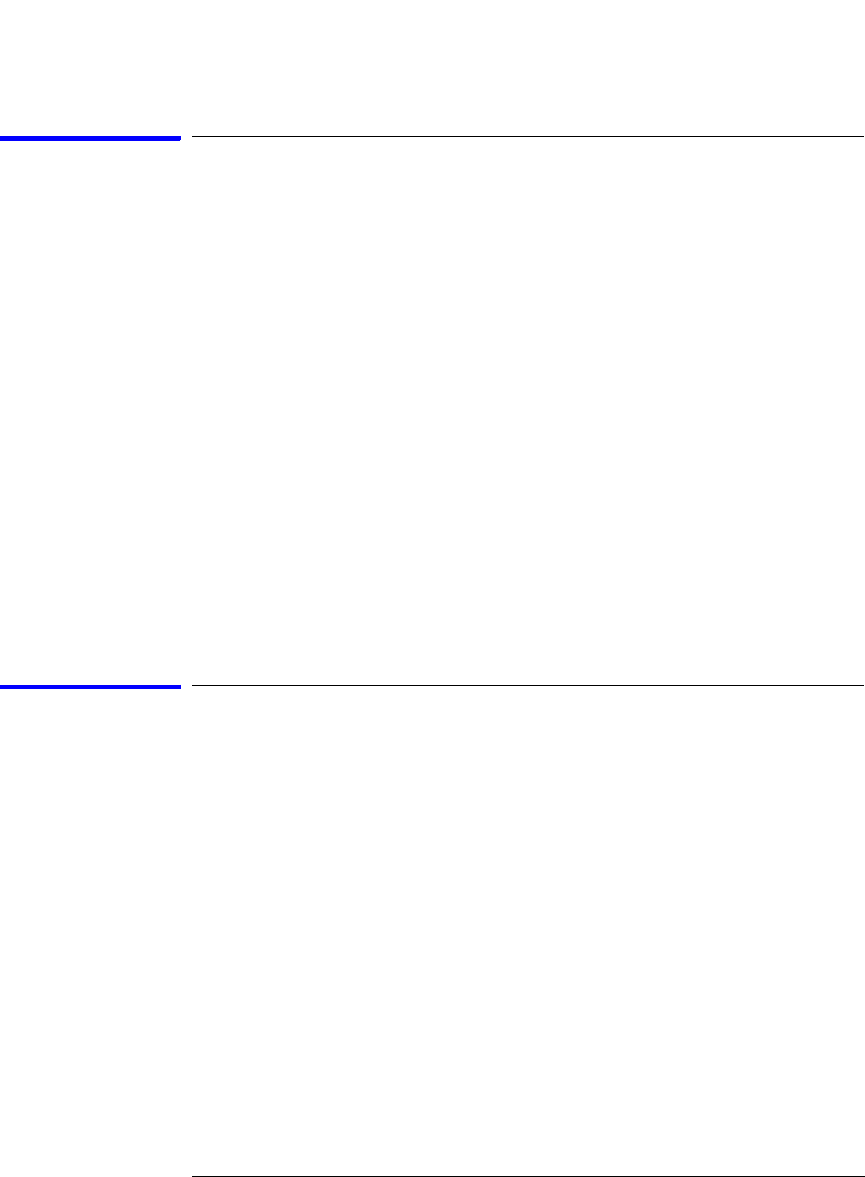User's Manual
Table Of Contents
- Agilent Technologies 16750A/B Logic Analyzer
- Agilent Technologies 16750A/B Logic Analyzer
- Contents
- Getting Started
- Step 1. Connect the logic analyzer to the device under test
- Step 2. Choose the sampling mode
- Step 3. Format labels for the probed signals
- Step 4. Define the trigger condition
- Step 5. Run the measurement
- Step 6. Display the captured data
- For More Information...
- Example: Timing measurement on counter board
- Example: State measurement on counter board
- Task Guide
- Probing the Device Under Test
- Choosing the Sampling Mode
- To select transitional timing or store qualified
- Formatting Labels for Logic Analyzer Probes
- Setting Up Triggers and Running Measurements
- Displaying Captured Data
- Using Symbols
- Printing/Exporting Captured Data
- Cross-Triggering
- Solving Logic Analysis Problems
- Saving and Loading Logic Analyzer Configurations
- Reference
- The Sampling Tab
- The Format Tab
- Importing Netlist and ASCII Files
- The Trigger Tab
- The Symbols Tab
- Error Messages
- Must assign Pod 1 on the master card to specify actions for flags
- Branch expression is too complex
- Cannot specify range on label with clock bits that span pod pairs
- Counter value checked as an event, but no increment action specified
- Goto action specifies an undefined level
- Maximum of 32 Channels Per Label
- Hardware Initialization Failed
- Must assign another pod pair to specify actions for flags
- No more Edge/Glitch resources available for this pod pair
- No more Pattern resources available for this pod pair
- No Trigger action found in the trace specification
- Slow or Missing Clock
- Timer value checked as an event, but no start action specified
- Trigger function initialization failure
- Trigger inhibited during timing prestore
- Trigger Specification is too complex
- Waiting for Trigger
- Analyzer armed from another module contains no "Arm in from IMB" event
- Specifications and Characteristics
- Concepts
- Understanding Logic Analyzer Triggering
- Understanding State Mode Sampling Positions
- Getting Started
- Glossary
- Index

182
Chapter 3: Reference
Error Messages
Trigger inhibited during timing prestore
The "trigger inhibited" informational message appears when you have a
logic analyzer making a conventional timing measurement, and it is
set to a slow sample rate. The logic analyzer will fill the designated
amount of pre-trigger memory before checking for the trigger
condition.
To calculate how long this should take, multiply the sample rate by the
percentage of pre-trigger memory and the acquisition depth. For
example, if
sample period = 1.0 ms (sample rate = 10
3
samples/sec.)
trigger position = center (percentage of pre-trigger memory = 50%)
acquisition depth = 64K (roughly 64 x 10
3
samples)
then the approximate time is 32 seconds.
Trigger Specification is too complex
The "Trigger Specification is too complex" message means that the
trigger sequence contains more unique event list expressions than can
be allocated to the available combiner resources in the analyzer
hardware.
The analyzer has a maximum limit of 16 event list combiner resources.
Each unique event list expression requires the use of at least one of
these combiner resources. A complex event list may require more than
one combiner resource.
The message does not mean that any single event list expression was
too complex to combine (see Branch expression is too complex), but
that the overall number of unique branch expressions specified has
exceeded the limit of 16.
In order to compile and run, the total number of unique event list










